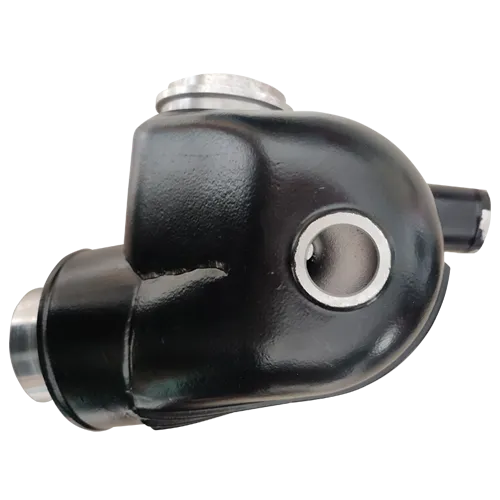Mobile:+86-311-808-126-83
Email:info@ydcastings.com
automotive water pump rebuilding
Rebuilding Automotive Water Pumps A Comprehensive Guide
The water pump plays a crucial role in the engine cooling system of an automotive vehicle. Its primary function is to circulate coolant through the engine and radiator, maintaining the engine's temperature within an optimal range. If the water pump fails, it can lead to serious engine overheating, resulting in costly repairs. For many car enthusiasts and mechanics, rebuilding a water pump can be a cost-effective and rewarding alternative to outright replacement. In this article, we will explore the process, benefits, and critical considerations involved in rebuilding automotive water pumps.
Why Rebuild a Water Pump?
Rebuilding a water pump can save money, extend the life of the pump, and ensure that the vehicle operates efficiently. Original equipment manufacturer (OEM) parts can be expensive and, at times, hard to find. By rebuilding, you can utilize existing components, minimizing waste and reducing the overall environmental impact of automotive repairs. Furthermore, a well-rebuilt water pump can perform just as effectively as a new one, provided it is done correctly.
Key Components of a Water Pump
Before diving into the rebuilding process, it’s essential to understand the primary components of a water pump
1. Pump Housing The outer part that encases the internal components, often made of metal or composite materials. 2. Impeller A rotating component that moves the coolant, usually made of aluminum or plastic. 3. Seal and Gasket These prevent leaks from occurring between the pump and the engine. 4. Bearing Helps to support the impeller and allows it to rotate smoothly. 5. Shaft Connects the impeller to the drive mechanism, usually the engine's crankshaft.
The Rebuilding Process
Rebuilding a water pump can be undertaken in several steps
1. Disassembly Carefully remove the water pump from the engine. This process usually involves draining the coolant and disconnecting several hoses and bolts. Keep track of every component for reassembly.
2. Inspection Check all components for wear and damage. Look for cracks or corrosion on the housing, wear on the impeller, and ensure the bearing rotates smoothly. If any parts are damaged beyond repair, they should be replaced with quality OEM or compatible aftermarket parts.
automotive water pump rebuilding

3. Cleaning Thoroughly clean all components using a suitable solvent. This process removes any old gasket material, corrosion, or buildup of debris. A clean surface is essential for proper sealing when reassembling.
4. Reassembly Begin rebuilding the pump by replacing any damaged components. Install a new seal and gasket to prevent leaks. Carefully reassemble the pump, ensuring all parts align correctly and are tightened to manufacturer specifications.
5. Testing Before reinstalling the water pump, it is a good idea to test its functionality, checking for any rotational issues or leaks. This step can prevent potential failures once the pump is in operation.
6. Reinstallation Install the rebuilt water pump back into the engine, reconnect all hoses, fill with coolant, and start the engine. Check for any leaks and ensure the coolant circulates properly through the system.
Benefits of Rebuilding
Rebuilding a water pump offers several advantages
- Cost-Effective The cost of rebuild kits is typically lower than purchasing a new unit outright. - Customization Enthusiasts can often upgrade components to enhance performance. - Sustainability Rebuilding reduces waste and promotes the reuse of parts, aligning with environmentally friendly practices.
Considerations and Tips
- Skills Required Ensure you have the mechanical skill set to rebuild a water pump properly. If in doubt, consult a professional mechanic. - Tools Needed Essential tools include a torque wrench, gasket scraper, and standard hand tools. An air compressor can be handy for cleaning parts. - Follow Manufacturer Specifications Always refer to the manufacturer’s service manual for specifications and torque ratings to avoid damages.
Conclusion
Rebuilding an automotive water pump can be a fulfilling project for those interested in automotive maintenance. With the right tools, careful attention to detail, and ample patience, a well-executed rebuild can restore your vehicle's cooling efficiency at a fraction of the cost of a new pump. Remember, this process not only extends the lifespan of your vehicle but also embraces sustainability by minimizing automotive waste. Whether you’re a seasoned mechanic or a DIY enthusiast, the challenge of rebuilding a water pump can lead to a well-running engine and a deeper understanding of automotive systems.
-
Why Should You Invest in Superior Pump Castings for Your Equipment?NewsJun.09,2025
-
Unlock Performance Potential with Stainless Impellers and Aluminum End CapsNewsJun.09,2025
-
Revolutionize Your Machinery with Superior Cast Iron and Aluminum ComponentsNewsJun.09,2025
-
Revolutionize Fluid Dynamics with Premium Pump ComponentsNewsJun.09,2025
-
Optimizing Industrial Systems with Essential Valve ComponentsNewsJun.09,2025
-
Elevate Grid Efficiency with High-Precision Power CastingsNewsJun.09,2025











